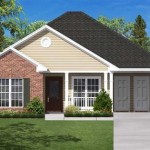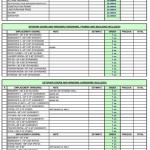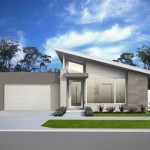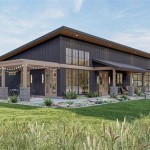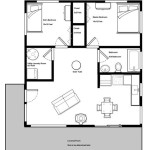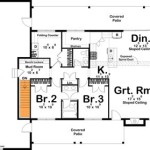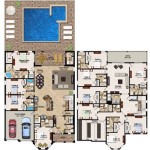Exploring the Potential of 700 Sq Ft House Plans
The demand for smaller, more efficient housing solutions is steadily increasing. Factors such as rising land costs, a growing interest in minimalist lifestyles, and environmental concerns are prompting many individuals and families to explore alternative living arrangements. Among these alternatives, 700 sq ft house plans are gaining significant traction. These plans represent a thoughtful approach to maximizing limited space, often incorporating innovative design elements to create comfortable and functional living environments.
A 700 sq ft house presents a unique set of design challenges and opportunities. The primary challenge lies in effectively utilizing every square inch to accommodate essential living spaces – bedrooms, bathrooms, kitchen, and living area – without sacrificing comfort or functionality. The opportunity, however, resides in the potential to create a highly personalized, efficient, and aesthetically pleasing dwelling that aligns with the occupant's specific needs and preferences. Careful planning and consideration of various design principles are crucial to success.
Before delving into specific design considerations, it's essential to understand the underlying principles that govern the creation of successful 700 sq ft house plans. These principles often involve prioritizing functionality, embracing open-concept layouts, and incorporating multi-functional furniture and design elements. Furthermore, efficient storage solutions are paramount to minimizing clutter and maximizing the perceived size of the space.
Prioritizing Functional Design
The foundation of any successful 700 sq ft house plan lies in prioritizing functionality. This involves a meticulous assessment of the homeowner's lifestyle and needs, identifying essential activities and allocating space accordingly. For instance, a homeowner who enjoys cooking might prioritize a larger, more well-equipped kitchen, even if it means sacrificing space in the living area. Conversely, someone who spends most of their time working from home might prioritize a dedicated home office space.
Another aspect of functional design is considering the flow of movement within the house. The layout should facilitate easy navigation and minimize unnecessary steps. This can be achieved by strategically positioning different areas and creating clear pathways. For example, placing the kitchen adjacent to the dining area or living room can enhance social interaction and create a more cohesive living space.
Effective space planning also involves careful consideration of the placement of doors and windows. Doors should be positioned to minimize disruption of traffic flow and maximize usable wall space. Windows should be strategically placed to provide natural light and ventilation while also maximizing privacy and minimizing energy loss. Large windows can significantly enhance the perceived size of the space and create a connection to the outdoors.
Embracing Open-Concept Layouts and Multi-Functional Design
Open-concept layouts are a popular choice for 700 sq ft houses because they create a sense of spaciousness and promote social interaction. By eliminating or minimizing walls between the living room, kitchen, and dining area, the available space is effectively unified, creating a larger, more airy feel. This approach also allows for greater flexibility in furniture arrangement and customization.
Multi-functional furniture plays a crucial role in maximizing space utilization in small homes. Examples include sofa beds, folding tables, and storage ottomans. These pieces serve multiple purposes, allowing homeowners to adapt their living space to different needs throughout the day. For instance, a sofa bed can be used as a comfortable seating area during the day and transformed into a bed at night, effectively eliminating the need for a separate guest room.
Beyond furniture, multi-functional design can also be incorporated into the architectural elements of the house. For example, a built-in bookshelf can double as a room divider, providing both storage and privacy. Similarly, a raised platform can be used to create a distinct living area while also providing storage space underneath. These innovative design solutions can significantly enhance the functionality and livability of a small home.
Efficient Storage Solutions: Maximizing Vertical and Hidden Spaces
Efficient storage solutions are absolutely essential in a 700 sq ft house. Clutter quickly accumulates in small spaces, making them feel cramped and uncomfortable. Therefore, careful planning and implementation of storage solutions are crucial to maintaining order and maximizing the perceived size of the space.
One effective strategy is to maximize vertical space. Tall shelves, cabinets, and wardrobes can provide ample storage without occupying valuable floor space. Wall-mounted shelves are particularly useful for storing books, decorative items, and other belongings. Utilizing the space above doors and windows can also provide additional storage opportunities.
Hidden storage solutions are another valuable asset in small homes. Storage beds, ottomans with hidden compartments, and built-in storage units are all excellent options. Utilizing the space under stairs or along angled walls can also provide discreet storage areas. The key is to identify unused or underutilized spaces and creatively transform them into functional storage solutions.
Furthermore, decluttering regularly is crucial for maintaining a sense of spaciousness and order. Periodically reviewing belongings and discarding items that are no longer needed or used can significantly reduce clutter and free up valuable storage space. Embracing a minimalist lifestyle can also contribute to a more organized and efficient living environment.
Beyond these core principles, several other factors can influence the design of a 700 sq ft house plan. Local building codes and regulations must be carefully considered to ensure compliance. The orientation of the house on the lot can impact natural light and ventilation. The climate of the region can influence material choices and energy efficiency strategies. Finally, the homeowner's budget will inevitably play a significant role in shaping the design and selecting materials and finishes.
In conclusion, creating a successful 700 sq ft house plan requires careful planning, innovative design solutions, and a commitment to maximizing space utilization. By prioritizing functionality, embracing open-concept layouts and multi-functional design, and implementing efficient storage solutions, it is possible to create a comfortable, functional, and aesthetically pleasing dwelling that meets the needs of its occupants. The key is to approach the design process with a clear understanding of the challenges and opportunities presented by the limited space, and to creatively explore different options to find the best possible solution.

700 Sq Ft 2 Bedroom Floor Plan Open House Plans By Susanna

House Plans Images 700 Sq Ft Small Modern 2 Bedroom

Pin On Jenna

25 X 38 East Facing 2bhk House Plan In 700 Sq Ft

Pioneer Plan 700 Square Feet

2 Bedrm 700 Sq Ft Cottage House Plan 126 1855

Narrow Lot Plan 700 Square Feet 2 3 Bedrooms 1 Bathroom 034 01073

Cottage Style House Plan 2 Beds 1 Baths 700 Sq Ft 116 115 With Loft Small Floor Plans

700 Square Feet Home Design Ideas Small House Plan Under Sq Ft

House Plan 94331 One Story Style With 700 Sq Ft 2 Bed 1 Bath

